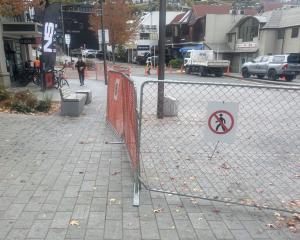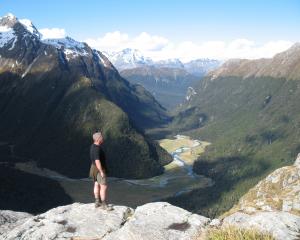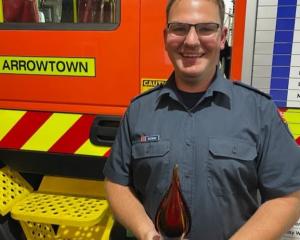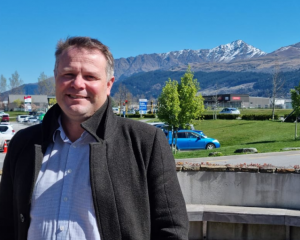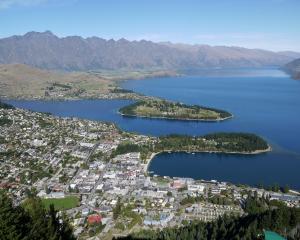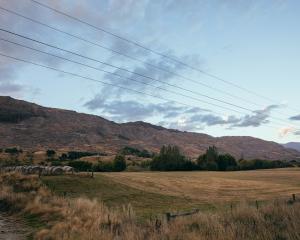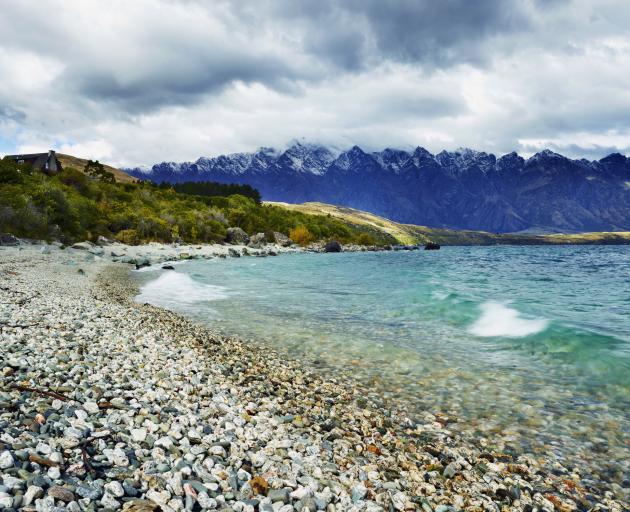
The Otago Regional Council has publicly notified the consent application, at the district council's request, seeking to authorise district-wide wastewater network overflows, which happen occasionally and cannot be entirely prevented.
The district council's application said despite overflows not being a "new or proposed occurrence'' they are not presently authorised under the Resource Management Act 1991.
In January the council was fined $24,000 for discharging sewage and polluting Lake Wakatipu, relating to an incident in August 2017.
At that time a Kelvin Heights resident reported a discharge from a manhole in the pipeline, which overflowed a cycleway-walkway and in to the lake.
The total amount leaked was about 900 litres.
The council had previously received four infringement notices and one conviction for wastewater discharge, when it was fined $37,500 for leaking raw sewage into the Kawarau River in February 2017.
The council's consent application said overflows were primarily caused by things like fats, sanitary items, wet wipes and building materials incorrectly put into the system, containing 421km of pipes and 65 pump stations, or from root intrusion from trees growing near pipes.
They caused blockages and breakages the wastewater network, which carries more than 4.65 million cubic metres of wastewater a year, restricting it from flowing freely.
That could result in a build-up of pressure in the system and if overflows could not occur at manholes or pump stations, there was a risk the wastewater could "blow back'' into private property, through toilets, showers and sinks.
The network used a combination of gravity and pumped systems to carry wastewater to treatment plants - the main Queenstown wastewater network pipes traversed the water's edge along Frankton Arm to Frankton beach where wastewater was pumped to the Shotover Treatment Plant.
In Wanaka, the line an along State Highway 6 to the treatment plant near Wanaka Airport.
Overflows typically happened at manholes and pump stations where they either flowed overland directly into water bodies, or overland into "catch pits'' and the stormwater network, before ending up in water bodies.
"This is reflective of all wastewater networks and illustrates that overflows cannot be entirely prevented, or their locations know prior to their occurrence,'' the application said.
The council aimed to reach the location of an overflow within 60 minutes of notification - the median response time in 2017-18 was 22 minutes.
After the site is made safe the crew works to restore the service.
The 2017-18 response time was 151 minutes, compared to the key performance indicator of 240 minutes.
While the council's wastewater network was relatively young, it planned to spend $105 million between 2018 and 2028 on pump stations, pipes and treatment plants.
However, the predominant cause of wastewater overflows was not age-related infrastructure failure, but foreign objects in the systems.
"This means that it is important to educate the community that the wastewater network is made to transport human waste, toilet paper, soaps and grey water only, and that any thing else contributes to blockages and breakages that cause overflows and may affect the integrity of the system.''
Visually, the application said "public perception'' of raw wastewater directly entering a freshwater environment from an overflow was not expected to be "favourable or acceptable to those that live, work and play in the Queenstown Lakes District''.
"As such, a wastewater overflow event, regardless of the location, has the potential to introduce adverse visual effects ... while it is acknowledged the adverse effects cannot be entirely avoided, they are mitigated and remedied to a degree that the effects can be considered more than minor, but less than significant.''
Overall, with the implementation of proposed conditions, the adverse ecological effects of "infrequent, short-term wastewater overflows to freshwater environments'', were considered to be "more than minor in localised environments, but overall no more than minor''.
Freshwater environments affected included Lakes Wakatipu, Wanaka, Hawea and Hayes, the Kawarau, Shotover, Clutha, Hawea, Cardrona and Arrow rivers and Luggate Creek.
The risk to human health was "low to very low''; adverse effects on surface drinking water take was "less than minor'' and adverse effects on recreation values "no more than minor''.
Odour effects were also considered to be no more than minor, the application said.
Public submissions on the consent application close with Otago Regional Council on July 12.
Comments
New Zealand ... come swim in our pristine 100% pure crap lakes ...
If this is allowed to happen and a bus full of tourists end up with a severe case of diarrhoea, you know what will happen ... $1b a month in lost tourism trade ... even if it was caused by those damn Aussie freedom campers down the road ;-)

